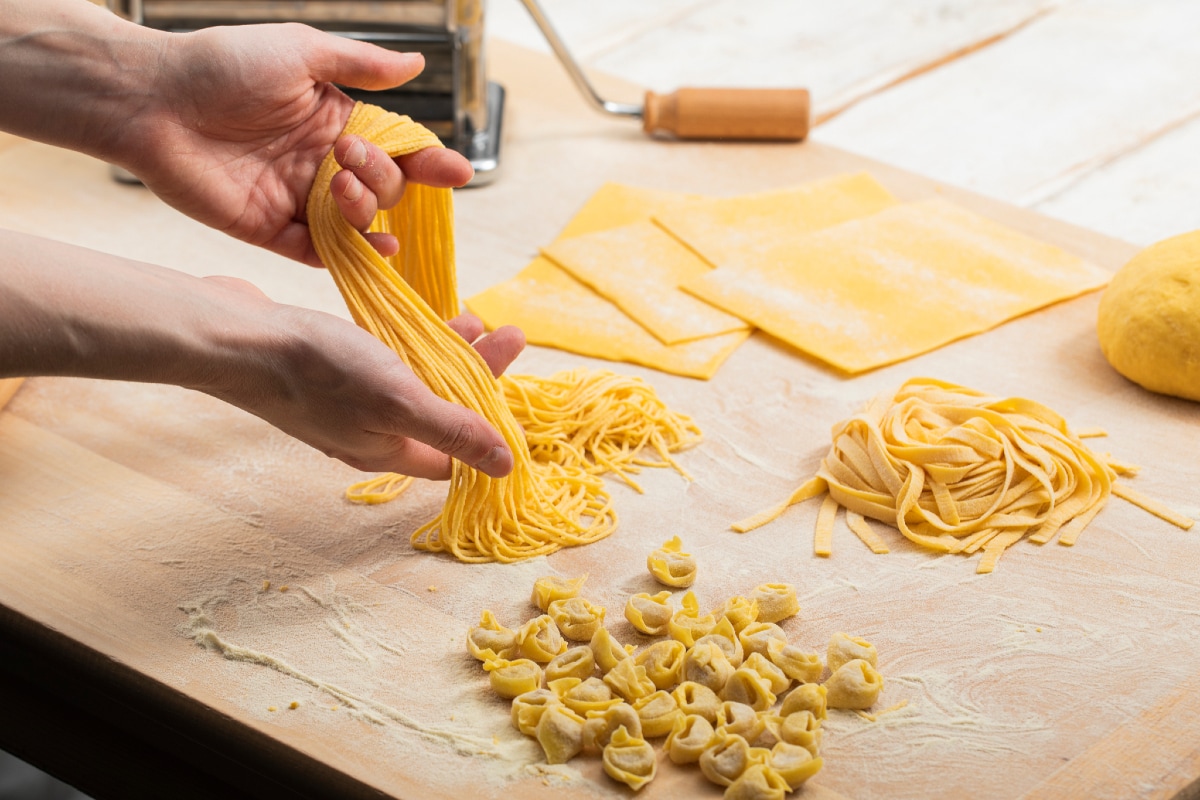Tagliatelle with porcini mushrooms
- Average
- 1 h 5 min
- Kcal 191

Colorful bowls filled with homemade pasta always signal something special at family tables—which is probably why people keep coming back for seconds (kids usually can’t resist that soft bite). Freshly made pasta creations usually have a lovely look with a silky sheen, and the nice texture stands out even next to store-bought noodles. Sometimes it’s the shape—twirls or cute pasta shapes—and other times it’s the good flavor, but the experience always feels a little more genuine. Homemade pasta sheets for layered lasagna or custom shapes tossed in your favorite sauce, every plate of this kind of pasta delivers familiar Italian cooking in a way that feels easy but a little bit impressive. Inviting color and a beautiful finish mean these noodles show up just as well at a family dinner as at special birthday meals…they’re DELICIOUS with simple tomato sauce, or even just a bit of olive oil with salt and pepper. Families looking for classic comfort or a pop of something new love how simple, friendly, and truly handcrafted pasta feels—especially when there’s extra for leftovers!
Busy weeknights get a boost from homemade pasta—it’s such a fun pick for quick pastas, pasta salads, or any family meal that needs easy success. Easy to match with hearty sauces, light vinaigrettes, or just a sprinkle of cheese, these kind of pasta sheets and pasta shapes fit almost anything families crave. There’s real room for mixing flavors—think fresh lasagna noodles with peppery arugula or wide egg noodles with meaty red sauce. Simple toppings work just as well as something more dressed up, so each plate feels approachable but still cozy. Kids can get involved, which is a great tip for keeping everyone busy—and the end result is pretty much always soft, moist, and absolutely satisfying. Versatile enough for big celebrations or quick pasta dinners, this pasta works in salads, soups, or just on its own. No matter the style—versatile shapes, smooth sheets, or simple strips—homemade pasta makes gathering at the table easy and always a little more special, with good food and great company every single time.
You might also like:

To prepare fresh egg pasta, pour the flour onto the work surface 1 and make a well in the center with the bottom of a bowl 2 3.

In the same bowl, beat the whole eggs with a fork 4 and pour them into the center of the flour 5, then add a pinch of salt 6.

Start mixing with the fork 7 to incorporate all the flour 8, then continue using a dough scraper to gather the flour on the work surface 9.

Once the eggs are well blended 10, continue kneading by hand 11, bringing the dough towards the center and stretching it with your palm without tearing it. If it shows cracks, moisten your hands with water and knead until it becomes compact and homogeneous. At this point, form a dough ball 12.

Wrap it with plastic wrap 13 and place it in the refrigerator for 30 minutes. After the resting time, retrieve the dough ball from the fridge, cut off a piece with the dough scraper 14, and cover the rest with a bowl or plastic wrap to prevent it from drying out 15.

Slightly flatten the dough ball with your hands 16, then roll it out with a rolling pin 17 and fold the ends towards the center 18 so you can pass it through the rollers of the pasta machine.

Pass the dough through the widest roller 3 or 4 times, folding the dough each time to strengthen it. Then gradually reduce the roller thickness 19 until reaching the thinnest setting. Your fresh egg pasta sheets are ready, and you can cut them to your desired shape 21!